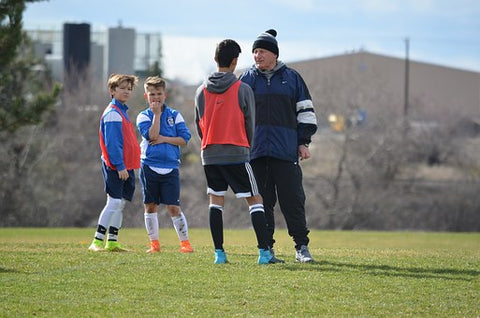
Youth Soccer in the United States
US Youth Soccer
There are many avenues available to participate in youth soccer here in the US. The largest organized group is US Youth Soccer. They boast the title of being the largest organized soccer program for youth in the United States. There are also informal programs offered by many communities, schools and churches.

Following is a general breakdown of the levels of more formalized programs for children and teens here in the United States.
Recreational Soccer
In the United States, Rec, as it is commonly known, is often a child’s first introduction to the game. It is designed for developing youth soccer players while maintaining the focus on fun.
Typically, children in recreational programs play locally. They may only meet one to two times a week for practice. The coach is often a parent of a team-member who volunteers his/her time.
The teams are randomly formed out of the pool of same aged boys or girls. Some clubs offer co-ed teams, especially at the younger ages. Tryouts are not necessary and a child’s abilities and skill level are not taken into consideration when placing them on a team.
Challenge Soccer
Challenge is the middle ground that fills the gap between the recreational players and the classic, higher level travel team players..
Challenge players typically attend a tryout where the coaches have the opportunity to evaluate the children’s technical skills. The level of competition at the Challenge level is usually higher than at the Recreational level. The financial and time commitment to the team is also higher, with most teams meeting for practice 2-3 times a week.
Depending on the club, coaches may be parents or trained youth soccer coaches. Challenge typically involves some travel, although most of the competition is found locally whenever possible. Most teams incorporate tournament play into their schedules.
Classic Soccer
Classic soccer requires even a greater commitment by both the parents and players alike.
Many states break down their youth soccer classic teams into 3 levels:
- Premier – top eight (8) – ten (10) teams in a state
- First Division – next “best” block of teams, often further broken down into regions.
- Second Division – remaining group of classic teams, often split into regions.
In theory, classic is considered to be a much more competitive level of play. Some question whether classic teams are actually as elite today as they were in the past. See discussion at Is Competitive Soccer Really Elite?
Classic teams require much greater dedication than either Recreational or Challenge. Not only is the time commitment greater, with many teams practicing three to four times a week, but the costs can be substantially higher.
The dues tend to be higher, and because the competition comes from a wider area, the travel costs also tend to be higher. Most classic teams require that the parents bear the costs of travel. This is one of the reasons why classic soccer is sometimes brought up when discussing Play to Pay.


